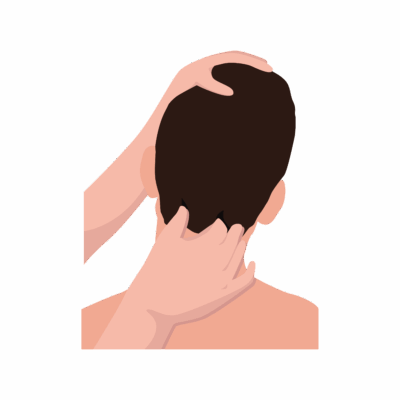Alar Ligament Test
The Alar Ligament Test is a clinical assessment used to evaluate the integrity of the alar ligaments, which stabilize the upper cervical spine (the connection between the skull and the first two cervical vertebrae, C1 and C2). The test is a key screen for upper cervical instability, especially following trauma, inflammatory disorders, or when upper cervical ligamentous laxity is suspected.
How the Test is Performed
There are two main variations: side-bending (lateral flexion) stress and rotation stress.
-
Client position: Usually supine (hooklying) or seated.
-
The therapist locates and stabilizes the spinous process of C2 (axis) (just below the skull base).
-
For lateral flexion (side-bending) stress:
-
While stabilizing C2, gently side-bend (laterally flex) the head to one side, applying slight compressive force if needed (do not rotate the neck).
-
The therapist feels for immediate movement of C2 under their fingers.
-
The test is repeated on both sides, and in three planes: neutral, flexion, and extension, to assess the alar ligament’s functional length.
-
-
For rotation stress:
-
After stabilizing C2, gently rotate the head to one side, ensuring there’s no side-bending.
-
Immediate movement of the C2 spinous process should occur. Excessive range (>20–21°) or a lack of firm end-feel may indicate ligamentous laxity.
-
-
Positive test:
-
Excessive movement, delayed movement, or a lack of C2 spinous process motion compared to normal indicates possible alar ligament injury or instability.
-
Clinical Significance
-
The alar ligaments limit excessive rotation and side-bending between the skull and cervical spine, protecting the spinal cord and brainstem.
-
A positive test suggests upper cervical instability. It is seen in conditions like rheumatoid arthritis, Down syndrome, trauma (e.g., whiplash), or congenital ligamentous laxity.
-
Instability at this level is a contraindication to high-velocity cervical manipulation, and caution is critical in all manual therapy.
Assessment
-
Suspect alar ligament laxity in clients with:
-
History of cervical trauma (whiplash, fall)
-
Rheumatoid arthritis, Down syndrome, connective tissue disorders
-
Severe neck pain, unexplained neurological symptoms (numbness, ataxia, dizziness)
-
-
Document findings from the test: which side, which movement, excessive / delayed / absent C2 motion, and notable client symptoms (pain, apprehension, dizziness).
-
Always defer high-velocity, end-range, or forceful cervical techniques if any instability is suspected.
Treatment
-
If positive:
-
Do not perform deep, forceful, or high-velocity manipulation/mobilization techniques in the upper cervical region.
-
Prioritize gentle, supportive techniques, addressing muscle guarding and global relaxation (especially in suboccipital/upper cervical muscles).
-
Educate clients on maintaining neutral neck posture and avoiding end-range movements or activities that stress the upper cervical spine.
-
Collaborate with and refer to physicians, physiotherapists, or specialists for further imaging and evaluation if instability is suspected.
-
Safety and Referral
-
Any sign of upper cervical instability is a reason for immediate referral to a physician or manual therapy specialist for advanced assessment and, if indicated, imaging (e.g., X-ray, MRI).
-
Monitor for red flags: unexplained neurological findings, loss of balance, drop attacks, severe dizziness, or new sensory changes. Client should be referred urgently if these red flags are noted.

